Restored Old Birchtown Schoolhouse celebrates centuries of Black education
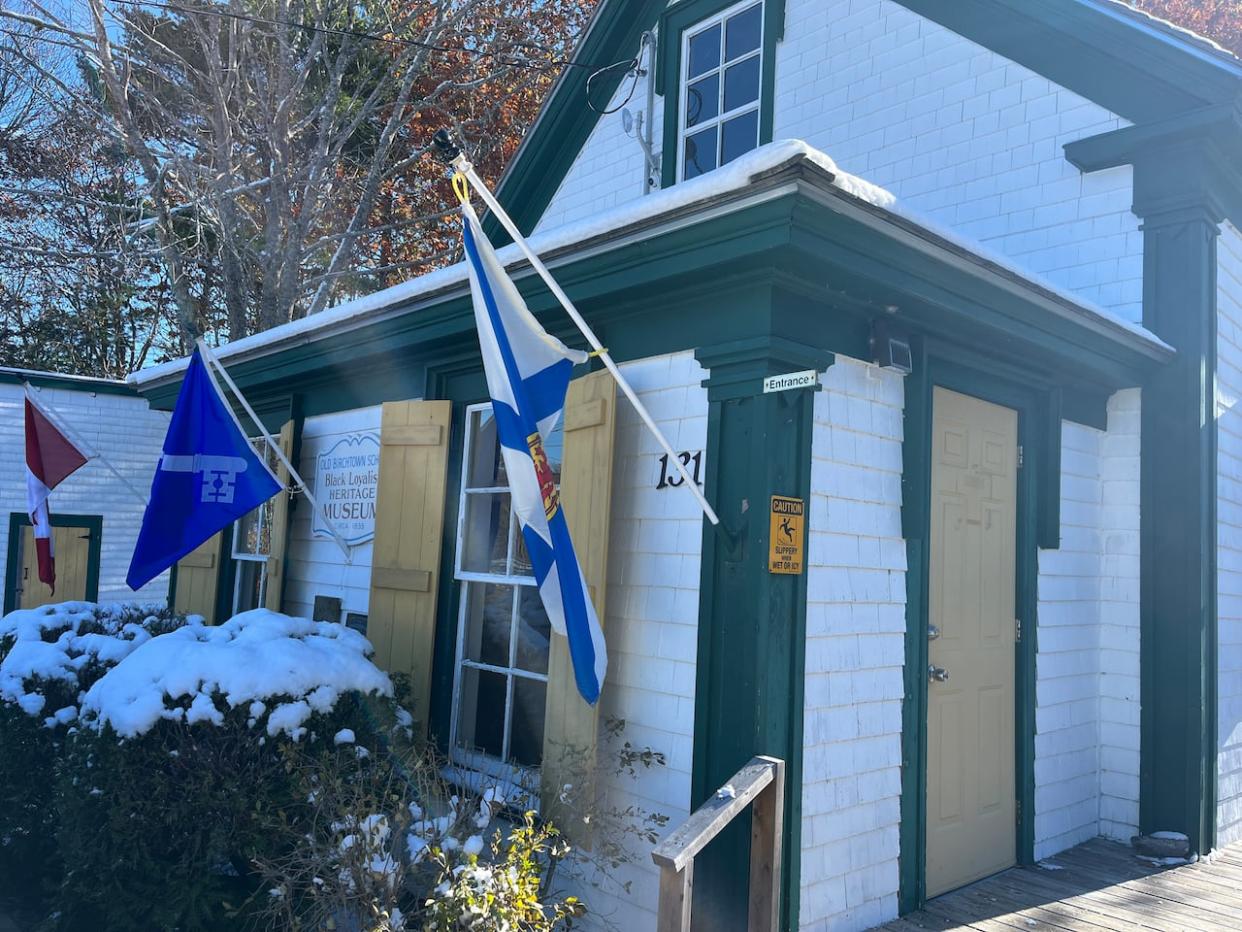
The Black Loyalist Heritage Centre in Birchtown, N.S., is preserving a piece of Canadian history with a new exhibit recreating a historic Black school.
Andrea Davis, the centre's executive director, says Black Loyalists escaped American slavery for freedom in Nova Scotia in the 1780s, but were barred from many public spaces.
"I get really emotional hearing the stories of how the Black Loyalists didn't belong in the churches or the workplaces or in the schools," Davis says. "When I walk into the centre, I can almost feel something that tells me I have to be able to continue the work that we have to do. For some reason, I feel like I'm the one who has been burdened to do that — but blessed as well."
For centuries, Nova Scotia wouldn't let Black children learn at mainstream schools. But people in Birchtown, near Shelburne, opened a school for Black and white learners in 1785. It was likely the first integrated school in the province.
The Old Birchtown Schoolhouse was built in 1835. It was an active school until it closed in 1961.
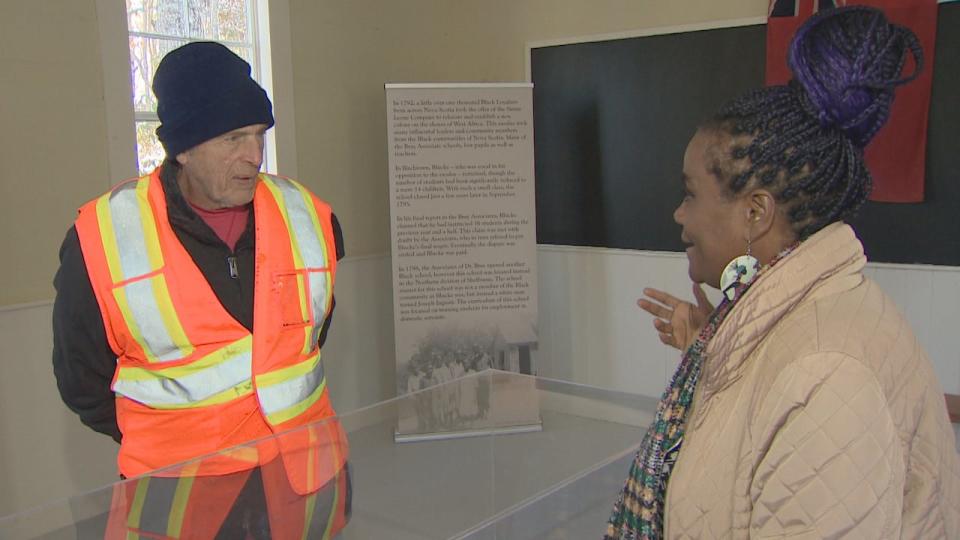
Former Birchtown student, and now school caretaker, Darrell Acker talks to Andrea Davis, executive director of the Black Loyalist Heritage Centre inside the restored building. (CBC)
Darrell Acker enrolled in 1955 and was part of the last class.
"Went here beginners, one and two and three, down to Sandy Point for four and five and back here for six. Easter vacation — not March Break in those days — we took our books to the other school that just opened. Last ones here, Grade Six," he says.
He remembers getting wood from the shed and feeding the stove to keep the classroom toasty. Discipline could be rough, with harsh physical punishment and the dreaded dunce hat.
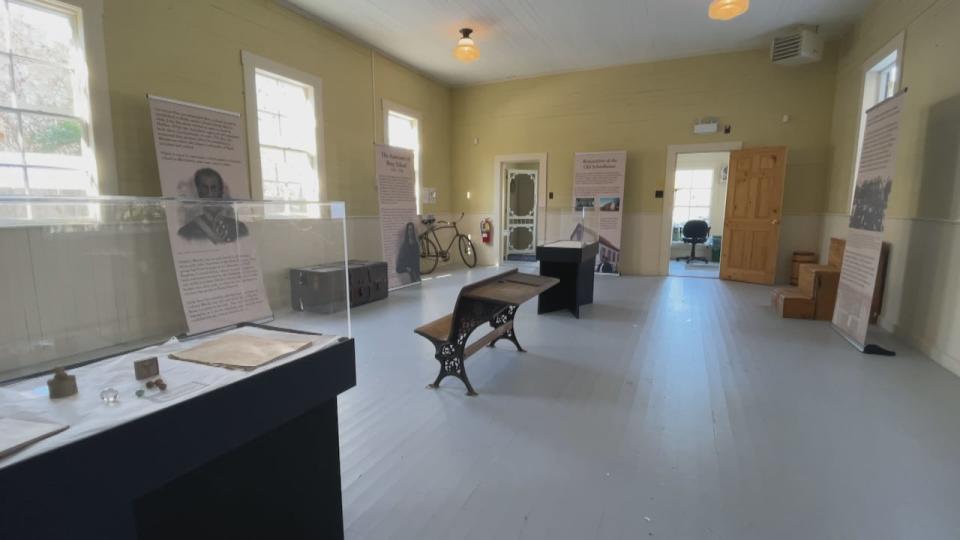
Staff restored the school close to its original condition, including a typical desk for students. (Robert Short/CBC)
"Once you got in here you'd have your desk, like that one there. Your teacher's desk would be up there, your stove was right in the middle with the pipe going along the top and over there you had a thing for water and paper cups."
He left Nova Scotia for years, but returned to Birchtown about 20 years ago and has been the caretaker of the property since.
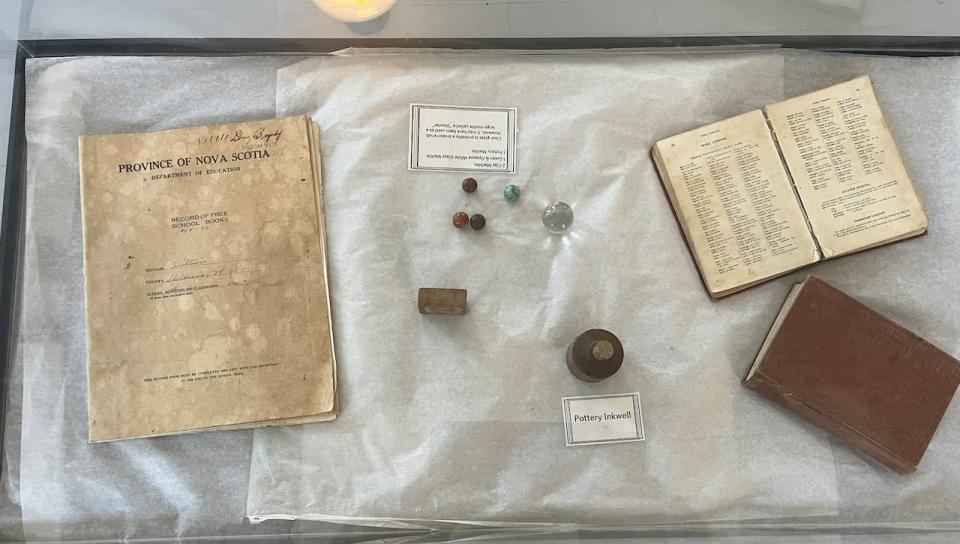
Marbles, an inkwell and the 1945-46 school records form one of the displays. (Jon Tattrie/CBC)
The building fell into disrepair over the years. Locals formed the Black Loyalists Heritage Society in the 1990s and opened the first Black Loyalist Heritage site in 2000. It included the Black Burial Ground, Monument Site, St. Paul's Anglican Church and the Old Birchtown Schoolhouse.
The school housed the main exhibit until the new centre opened in 2015. Davis says turning it to a one-room school museum now made sense. Braden Chetwynd, the centre's program and outreach co-ordinator, created the exhibit.
"It is an old school, so we felt it was important enough that we wanted to recreate that environment for visitors," Davis says. "And our program outreach co-ordinator, he came up with this wonderful display with the banners and with the artifacts you see here to make it just a little bit more of a conversation piece as well, and to have it understood what this building means and the history behind it."
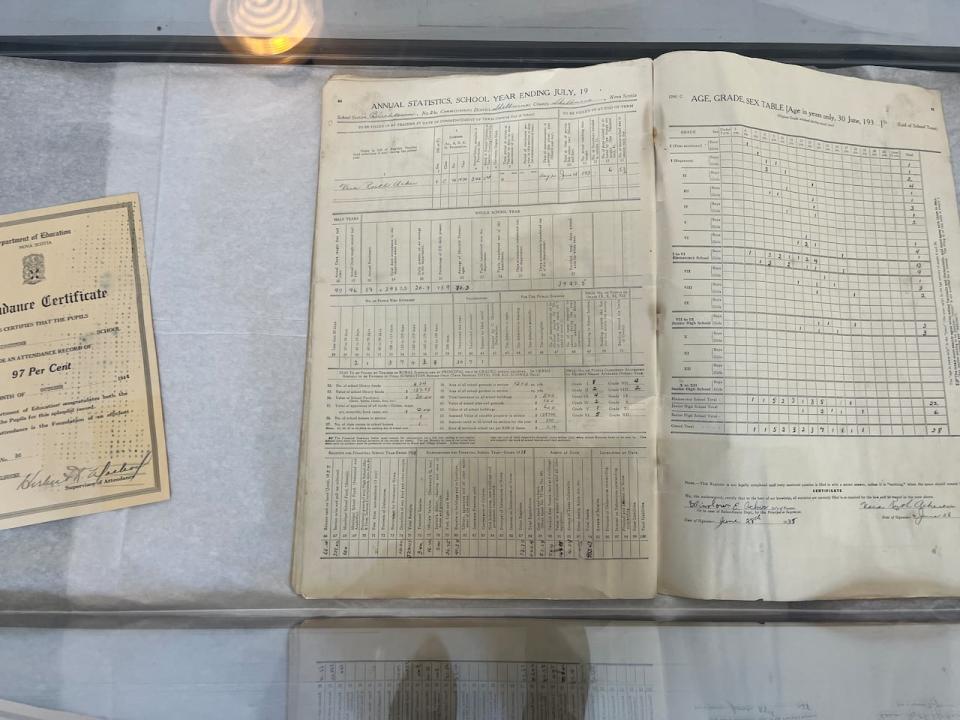
This artifact details the number of books in the school library (424) in 1938. (Jon Tattrie/CBC)
Acker, who is white, says the students didn't pay much attention to race. "Like my friend said that died last year, we was all poor."
Davis says their research into the school revealed that historically, a lot of the education directed at Black children taught them things like knitting and sewing.
"It almost facilitated some skill or trade to the Black community," she says. "Education is so important. It highlights the fact that we all learn differently, but we all learn, and we continue to learn. It just never stops."
She hopes to begin inviting today's students back into the Old Birchtown Schoolhouse to learn lessons from the past. She also wants to build up the displays and invites anyone with artifacts from that school, or from similar schools of the era, to get in touch if they can add to the museum's collection.
For more stories about the experiences of Black Canadians — from anti-Black racism to success stories within the Black community — check out Being Black in Canada, a CBC project Black Canadians can be proud of. You can read more stories here.

(CBC)
MORE TOP STORIES

